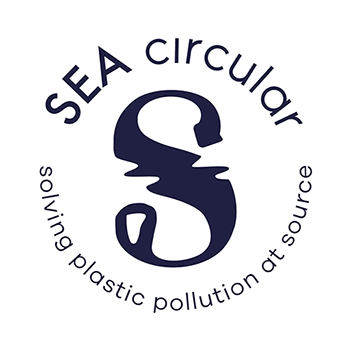
Consumers and businesses both hate plastic waste. So why can't we fix the problem?
By Edwin Seah, Head of Sustainability, Food Industry Asia & Natalie Harms, Programme Officer – Marine Litter in the Secretariat of the Coordinating Body on the Seas of East Asia at the United Nations Environment Programme
Plastic pollution is never far away in South-East Asia. It’s in the streets, the rivers, the forests, the beaches and almost anywhere else you care to look. According to a 2018 United Nations Environment Programme (UNEP) analysis of plastics production, demand and waste, half of the world’s plastic is produced in Asia and around 40 per cent of all plastic is consumed in the Asia-Pacific region. It is clear the region is at the heart of the global plastic waste crisis.
What was already a big problem prior to COVID-19 has been compounded by the pandemic. While valid, current concerns about sanitation are overshadowing long-term environmental initiatives and plastic waste is proliferating across all countries. Lockdowns and social distancing have also increased household plastic and non-recyclable waste, with significant volumes generated from increased e-commerce deliveries further magnifyingy the problem.
Nobody wants this. Consumers hate plastic waste as do businesses, for whom it’s economically inefficient. But there is a disconnect between what everyone wants and what everyone is doing.
The Perceptions on Plastic Waste survey of 2,000 consumers and 400 food and beverage businesses in Indonesia, Malaysia, Philippines, Thailand, and Viet Nam conducted by the United Nations Environment Programme (UNEP) and Food Industry Asia (FIA) in 2020 found 91% of consumers are “extremely concerned” about the problem. But more than half of the consumers surveyed continue to use non-recycled containers, due to both cultural norms about hygiene and lack of understanding that repurposed food packaging is typically safe.
Similarly, 82% of companies surveyed in the same study expressed concerns about plastic waste. But less than half of them are part of alliances at the national, regional, or global levels working to solve the problem.
Stricter protocols adopted to tackle plastic pollution
In an attempt to close the intention-action gap, governments have pledged to take a firmer stance on plastic waste and continue to advance efforts to mandate improved management and reduction of plastic waste. In 2019, ASEAN member nations signed the Bangkok Declaration on Combating Marine Debris, which compiled commitments from around the region.
Indonesia pledged US$1 billion to curb 70% of its ocean debris by 2025 and Malaysia plans to eliminate single-use plastic by 2030. Thailand made the commitment to ban plastic cap seals in water bottles, and plastic microbeads by 2019 and major manufacturers in the country have responded positively. It also plans to eliminate plastic bags less than 36 microns in thickness, Styrofoam food boxes, plastic straws, and single-use plastic cups by 2022.
Viet Nam’s action plan targets that by 2030, the country will reduce 75 per cent of plastic waste in the ocean, have 100 per cent of lost or discarded fishing tools collected, and eradicate the direct discharge of fishing tools into the ocean.
Tailoring measures to close the plastics loop
Such commitments mark a significant step forward, however, consumers and businesses agree that improved waste collection is also a top priority – an area that is unfortunately lacking in many developing countries across South-East Asia and has deterred recycling.
For years, the concept of “Reduce, Reuse, Recycle” has been widely promoted with the goal of creating a circular economy, but recycling is often sadly disregarded. Within selected markets, over 80 per cent of recycling operations have been impeded during the pandemic, increasing landfills that are quickly reaching capacity. Consumer adoption of recycling has fallen short.
news
